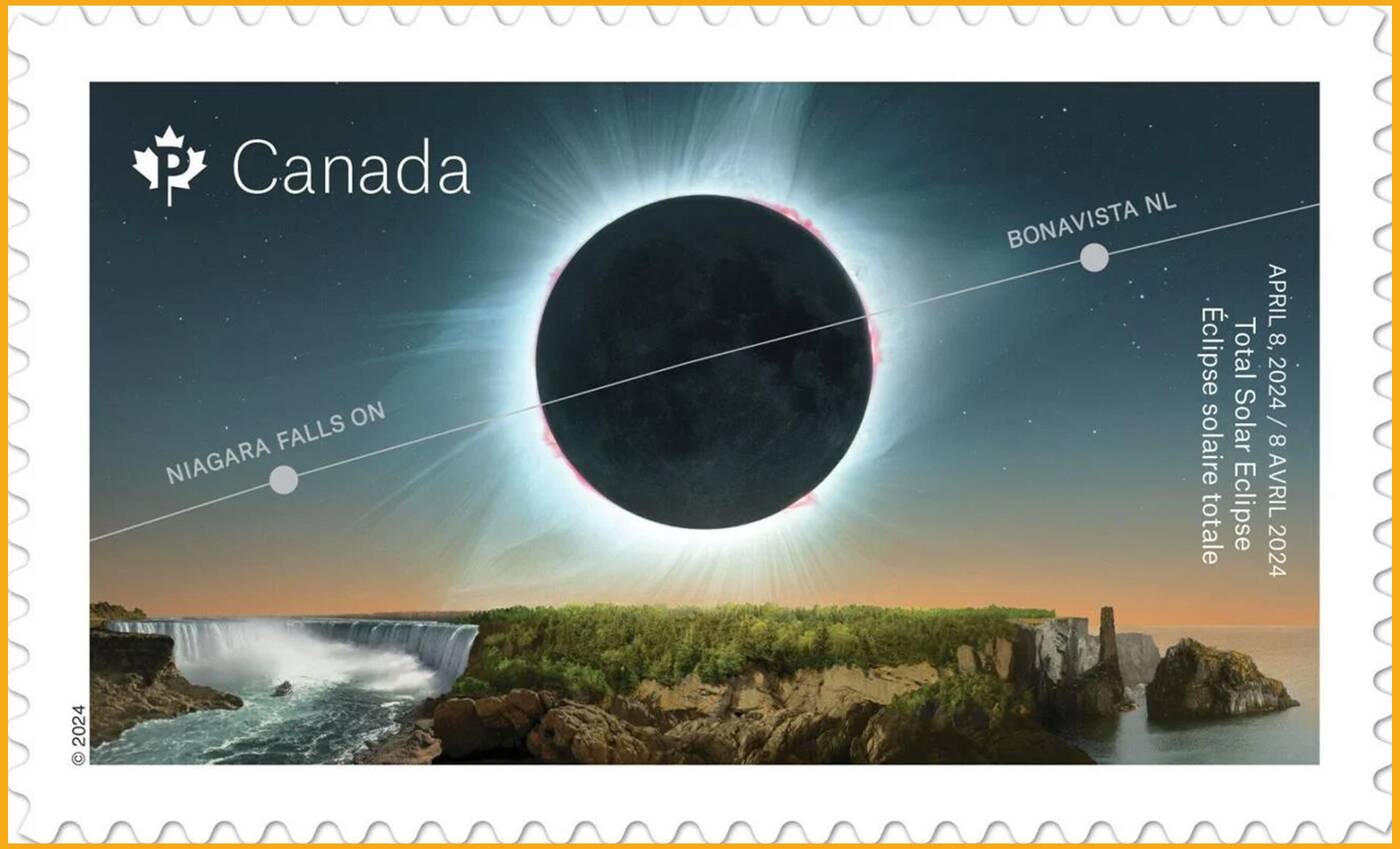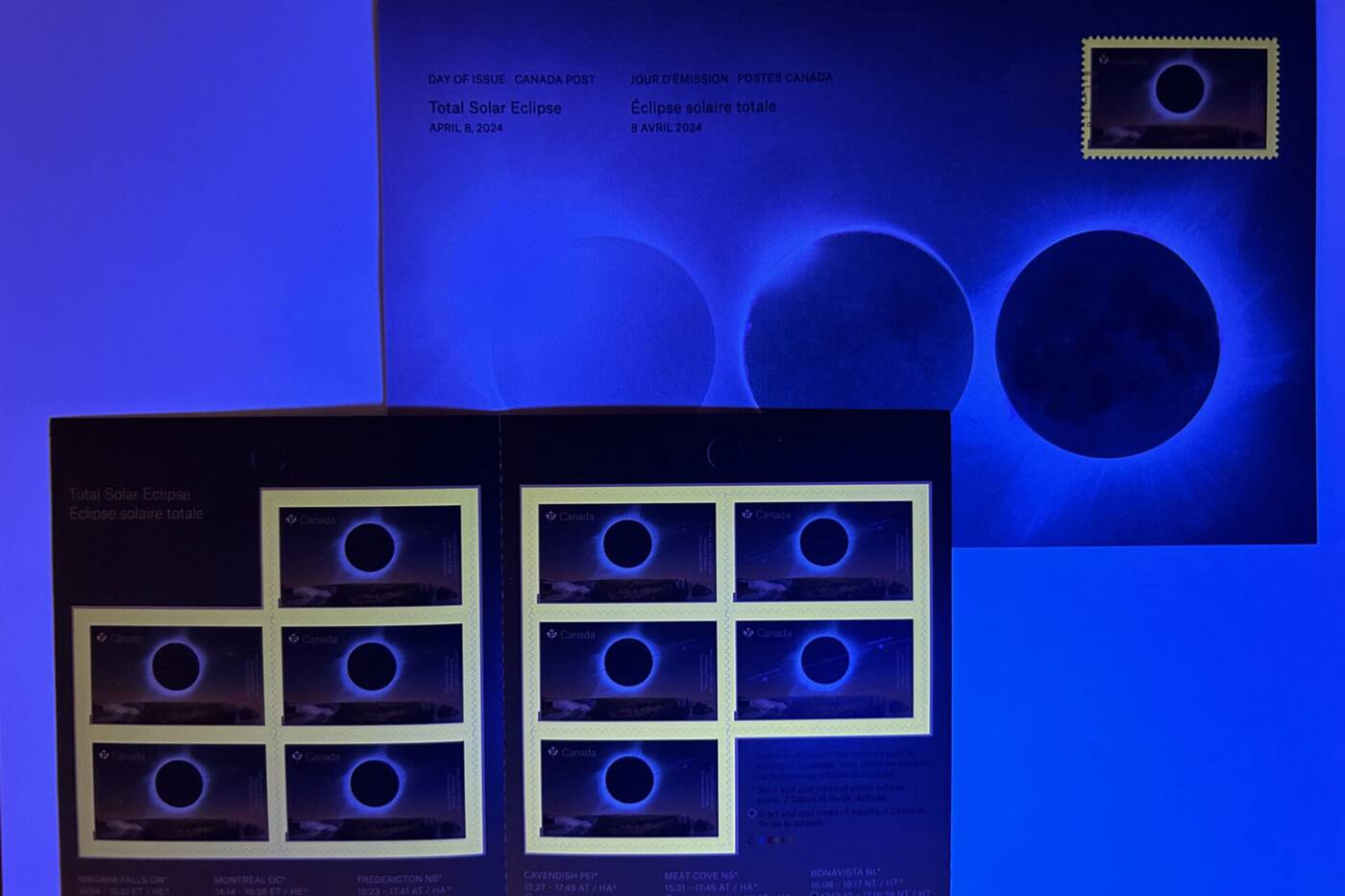
Ontario's rare solar eclipse just got honoured with stunning glow-in-the-dark stamp
Canada Post has unveiled a new out-of-this-world stamp celebrating the upcoming total solar eclipse.
The eclipse will take place on April 8, and its path will pass through parts of Canada, Mexico and the U.S. for the first and only time in this century.
According to NASA, solar eclipses occur approximately two to four times per year, though chances to witness these events are much rarer. The U.S. Space Agency says that the area of ground covered by total solar eclipses is only about 80 kilometres wide, and specific areas may only see total blockage once every hundred years or so.
How to experience the 2024 solar eclipse in and around Toronto https://t.co/aMjuHNj33K
— blogTO (@blogTO) February 25, 2024
The stamp was designed by Richard Nalli-Petta using a combination of photography and illustration. Its image depicts the eclipse travelling between Niagara Falls, Ontario and Bonavista, Newfoundland. It also features some of the natural landscapes in its path — like Niagara Falls, Hope Falls and Spillers Cove.
The upcoming eclipse will trace a path about 200 kilometres wide, stretching from southwestern Ontario to eastern Newfoundland and Labrador.
Canada Post noted that the total eclipse won't be seen here again until 2044.

The first-ever eclipse stamp from Canada Post, honouring the eclipse taking place on April 8.
Aside from the beautiful design, the stamp also includes a special feature.
"Printed with a special spot-gloss varnish that glows when exposed to black light, it shows the eclipse set against a darkened sky," Canada Post revealed.

The stamps have a special glow-in-the-dark feature under black light. Photo from Canada Post.
A single eclipse stamp is now available for $1.92, or $9.20 for a booklet of 10.
For Canadians planning to catch a glimpse of the historic phenomenon, it's not safe to look directly at the sun without proper eye protection designed for solar viewing.
Where to buy solar eclipse glasses in Ontario to safely view the rare event in 2024 https://t.co/97Dm2UKCHi
— blogTO (@blogTO) February 23, 2024
NASA recommends amateur eclipse-watchers pick up widely available specialized "eclipse glasses" or use indirect methods like a pinhole projector to prevent damage to the eyes.
IgorZh/Shutterstock
Latest Videos
Latest Videos
Join the conversation Load comments







